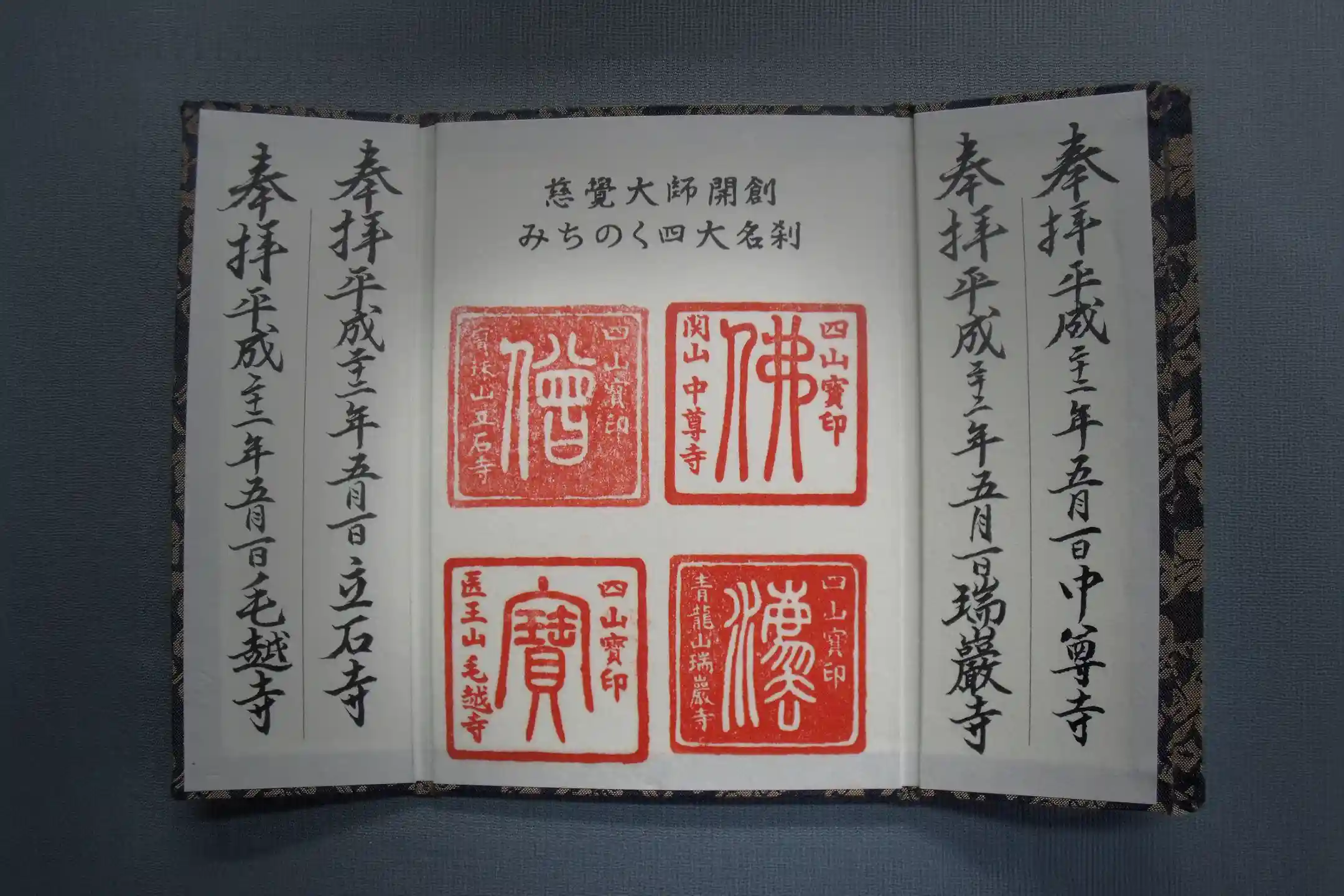Japan’s book culture isn’t just about conveying information; it also celebrates craftsmanship and spirituality. If you pick up a Japanese book, you’ll notice meticulous detail in the paper, typography, and binding. This attention to detail can seem overly specialized at times, but it’s actually part of a broader cultural context, not just an oddity.
Japan’s stamping culture — from goshuin (temple and shrine stamps collected by visitors) to personal bookplates called zōshoin — also reflects these values through beautifully arranged characters and brushwork. You might be surprised by the profound stories hidden in these small stamps and slips of paper — the kind of discovery that can make you exclaim, “I never thought of it this way!” In this guide, we’ll explore the history and appeal of Japan’s book and stamp culture, and share some modern ways to appreciate these traditions on your travels.
Characteristics and Artistry of Japanese Book Culture: From Tradition to Modern Art
In Japan, a book isn’t just a vessel of information — it’s treated as a work of art. Every detail is carefully considered: the texture of the paper, the style of binding, even the use of white space. While Western bookbinding has its own charm, the Japanese approach weaves fine craftsmanship into the very experience of reading.
It’s easy to dismiss this meticulousness as an odd quirk, but these practices have deep historical roots. Once you know the context, what might seem like overkill becomes a fascinating insight into the culture.Even classic Japanese literature is accessible in new ways: the National Diet Library has digitized many classics and made them free to read online ([1]). Meanwhile, modern art books mix traditional techniques with cutting-edge graphics and photography, blurring the line between books and art and offering new ways to enjoy them.
Evolution from Wahon to Contemporary Art Books
A traditional Japanese wahon book, with its soft paper and hand-stitched binding, exemplifies this artistic approach. During the Edo period, books often combined text and illustrations so elegantly that reading one felt like admiring a piece of art.
By contrast, Western printing historically prioritized efficiency and mass production. Neither approach is inherently better; they simply arose from different needs and histories.
Today, a new wave of art books merges time-honored Japanese techniques with modern art and photography. At the annual TOKYO ART BOOK FAIR, you can see an array of such creations from Japanese and international artists, where classical artistry meets modern experimentation ([2])
Enjoying Luxurious Bindings and Limited-Edition Art Books
Another way to appreciate Japan’s book culture is to collect beautifully bound art books. Many special editions have textured washi covers or elegant foil stamping, turning the cover into a piece of art itself. These artistic touches are as highly valued in Japan as they are in the West. You might even attend events at galleries or specialty bookstores to meet the artisans or authors behind these works, adding a personal connection to the experience.
Rather than thinking of Japan as just a far-off destination, these encounters let you connect directly with local craftsmanship and creativity. And if you bring home a limited-edition volume, it’s not just a decoration on your shelf — every time you open it, you’ll be reminded of the unique connection you made with Japan’s culture..webp?width=750&height=500&name=Goshuincho%20(seal%20book%20%20stamp%20book).webp)
Enjoying a Book-Oriented Lifestyle at Hidden Urban Bookstores and Cafés
Japan’s love of books isn’t confined to libraries or museums — it spills into daily life. In cities, tucked-away bookstores and cafés offer peaceful hideaways from the urban bustle.You may have visited book cafés in the West, but Japan’s have a unique charm. They’re often quiet and intimate, with subtle traditional decor that creates a calm, comfortable atmosphere.
Book Experiences in Historical and Modern Spaces
Tokyo’s city center presents a mix of old and new for book lovers. You might sip coffee in a café converted from a Meiji-era building, or browse a sleek bookstore known for its modern architecture. In the Kanda-Jimbocho district, famous for its antiquarian bookshops, you can wander from one shop to the next and then relax in an old-fashioned café that feels like a step back in time ([3]).
On the other hand, modern neighborhoods like Roppongi and Ginza feature spacious, airy book cafés. Carefully curated lighting and soft background music create a refined mood where you’ll feel right at home. Experiencing both the historical charm and the contemporary chic of these places shows how multifaceted Japan’s book culture is
Spaces Integrating Books, Art, and Cuisine
Recently, spaces that blend bookstores with art galleries and even restaurants have been emerging. One such place is Daikanyama’s Tsutaya Books, which lets you sip a specialty coffee while surrounded by books displayed as beautifully as art in a gallery ([4]).These hubs highlight Japanese attention to detail in a stylish, modern setting. And it’s not just about trendiness — books become bridges between people, sparking conversations and cultural exchange.
Goshuin Culture: Traditional Japanese Temple Stamps Transforming into Art
If you enjoy collecting stamps or little travel keepsakes, Japan’s goshuin culture will surely interest you. At each temple or shrine, you can receive a hand-drawn stamp done in beautiful calligraphy. Some churches in the West offer visitor stamps too, but Japan’s goshuin are far more elaborate, featuring elegant brushwork and vivid ink designs.
Each goshuin is more than just a stamp in a book — the black ink and vermilion seal carry prayers and gratitude, reflecting a deep spiritual sensibility. Appreciating the devotion behind each one can turn a simple travel ritual into a meaningful cultural connection.
History and Spirituality of Goshuin
Centuries ago, goshuin began as receipts for donations or proof of having copied sutras at temples and shrines ([5]). Over time, each temple and shrine developed its own style of stamp, often with slightly blurred ink edges that hint at the centuries of tradition behind it. Knowing this history, receiving a goshuin feels less like getting a souvenir and more like taking part in a living tradition of faith and art.
Goshuin Collecting Guide Across Japan
Today, collecting goshuin can feel like a treasure hunt across Japan. Many temples and shrines offer unique designs that change with the seasons or highlight local culture. For example, Tokyo’s Sensoji Temple might give you a bold, dynamic calligraphic stamp, while Kyoto’s Kiyomizu Temple’s goshuin may include delicate Sanskrit characters. Some places even issue special stamps for festivals or limited-time events, which adds excitement whether you’re a seasoned collector or a first-time visitor.
Design and Craftsmanship of Goshuin Books
If you start collecting goshuin, you’ll want a goshuin-chō (stamp book) to keep them in. These albums are often beautiful objects themselves: they fold out accordion-style with washi paper pages, and their covers might be decorated with yuzen-dyed fabric or gold-foil designs. They’re handmade by artisans rather than mass-produced, and each one reflects Japan’s dedication to craft and tradition, adding warmth and history to every page of your collection.
Bookplates: Art Connecting Individuals to Books
In Western tradition, you might have seen ex libris bookplates that show who owns a book. Japan has a similar practice with zōshoin — personalized bookplates carved with the owner’s name or pen name. Historically, these stamps served as proof of ownership and signified a touch of scholarly pride. Much like Western bookplates, Japanese ones often boast intricate designs and unique lettering — little works of art inside the cover of a beloved book.
Japanese bookplates might look foreign to you because of the kanji, but the sentiment behind them is universal — a personal bond with one’s books. Across cultures, a bookplate signifies a love for one’s library and is an expression of identity as a reader.
Bookplates Loved by Famous Cultural Figures
Even Japan’s literary giants were fond of bookplates. Authors like Natsume Soseki, Mori Ōgai, and Tanizaki Junichirō each had their own personal stamps reflecting their personality, similar to Western writers who had custom bookplates.
Modern Custom-Made Bookplates
The bookplate tradition is still alive and well today. You can even commission your own custom hand-carved bookplate stamp — and thanks to the internet, readers outside Japan can order one from a Japanese artisan ([6]). Using a personalized stamp to mark your books creates a ritual. Each time you press it into a new book, you add a piece of yourself to the pages and bring a bit of Japanese culture into your everyday life.
Sustainable Book Culture and Traditional Stamp Art: The Harmonious Coexistence of Ecology and Art
In an age of mass production, Japan is seeing a movement to preserve these book and stamp traditions in an eco-friendly way. People wonder how they can continue these crafts while conserving paper and reducing waste. The guiding idea is to create only what’s needed and to do so with respect for both context and nature.
You might wonder if all these elaborate steps are really necessary, but this careful approach reflects a deep respect for nature and people. Seen this way, Japanese craftsmanship stops looking eccentric and instead offers inspiration on environmental issues.
Latest Examples of Environmentally Conscious Books and Stamp Practices
Some publishers now use recycled or FSC-certified paper ([7]) and have switched to greener inks like soy-based or other water-based inks. Traditional stamp makers are innovating too: some carve stamps from scrap wood and use natural dyes for the ink. These changes are becoming the norm, proving that tradition and environmental responsibility can go hand in hand.The core concept of living in harmony with nature has long been part of Japanese culture ([8]).
Eco-friendly Bookstores and Stamp Experience Spots

Urban Japan also boasts bookstores and cafés designed with sustainability in mind. They might use reclaimed wood and maximize natural light with big windows to save energy. Some even host workshops where you can make a mini-book from recycled paper or practice traditional stamping with eco-friendly materials.
A survey by the Japan Tourism Agency found that blending education with a hands-on activity significantly boosts tourist satisfaction ([9]), so it’s no surprise these eco-art experiences are catching on as a fresh, memorable way to enjoy Japan.
Conclusion
As we have explored throughout this guide, Japan’s book and stamp culture has dynamically evolved by blending the warmth of traditional washi paper and artisanal binding techniques with contemporary design sensibilities. Goshuin from temples and shrines encapsulate prayers and aesthetic sensitivity within a single small sheet, radiating an artistic presence. Personal bookplates subtly reflect an individual’s personality or beliefs and have been cherished alongside treasured books through generations.
Furthermore, adopting sustainable practices in paper sourcing and ink production emphasizes the importance of harmonizing these cultural traditions with environmental stewardship.
I hope this guide inspires you to look beyond the surface and see these cultural treasures not just as curiosities, but as doorways into Japan’s rich history and spirit. The next time you find yourself in a book café or at a temple in Japan, take a moment to feel the texture of a finely crafted book or admire the bright red seal filling a page of your goshuin-chō. These are moments when art and spirituality come alive — and they’re among the sweetest rewards of traveling in Japan.
Author Bio





.webp)
.webp)